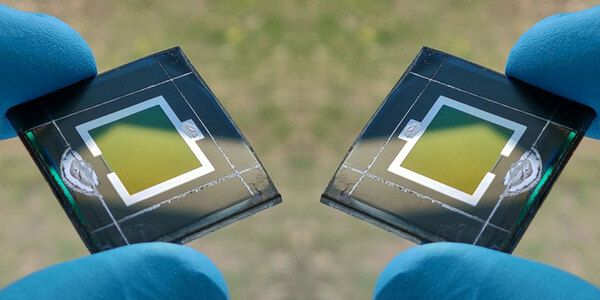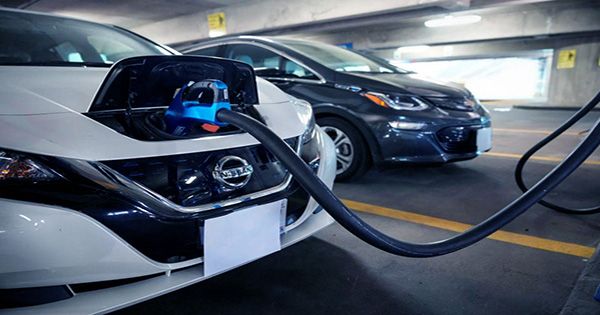Uppsala University now holds the global record for electrical energy generation using CIGS solar cells. The new world record stands at 23.64 percent efficiency. An impartial institute conducted the measurement, and the results were reported in Nature Energy. The record is the result of a collaboration between the company First Solar European Technology Center (previously known as Evolar) and Uppsala University solar cell researchers.
“The measurements we took ourselves for this solar cell and other recently produced solar cells are within the margin of error for independent measurement. That measurement will also be used to calibrate our own measuring methods internally,” explains Marika Edoff, Professor of Solar-Cell-Technology at Uppsala University and the study’s principal investigator.
The previous world record was 23.35 percent (Solar Frontier, Japan), preceded by 22.9 percent (ZSW, Germany). Uppsala University has held the record before, the first time being in the 1990s in the research collaboration Euro-CIS.
Our study demonstrates that CIGS thin-film technology is a competitive alternative as a stand-alone solar cell. The technology also has properties that can function in other contexts, such as the bottom cell of a tandem solar cell.
Marika Edoff
“At one time we also held the record for a series-connected prototype. Even though it’s quite a long time since we held the cell record, we’ve often been just behind the best results and of course there are many relevant aspects to consider, such as the potential for scaling up to a large-scale process, where we have always been at the forefront,” Edoff says.
Solar cells are increasing rapidly worldwide and solar power accounted for just over 6 percent of electricity around the globe in 2022 according to the International Energy Agency (IEA). The best solar modules of crystalline silicon, which is the most widely used material in solar cells, currently convert more than 22 per cent of sunlight to electric power and modern solar cells are both low cost and stable in the long term.
One goal in solar cell research is to achieve more than 30% efficiency at realistic production costs. Tandem solar cells are frequently cited as more efficient, however they have proven to be prohibitively expensive for large-scale use.
Fraunhofer ISE, an independent institute in Germany, measured the world record of 23.64 percent. The academic study contains a detailed material and electrical examination of the solar cell, as well as a comparison to previous records for the same type of solar cell from other research organizations.

A solar cell’s most significant qualities are its ability to collect light and transmit energy to an electrical load. For this to work, the material must be able to absorb the maximum amount of sunlight while avoiding losing energy by converting it into heat within the solar cell.
CIGS solar cells are made up of a glass sheet composed of standard window glass that has been coated with multiple different layers, each of which serves a specific purpose. The substance that absorbs sunlight is made up of copper, indium, gallium, and selenide (thus the abbreviation CIGS), as well as silver and sodium. This layer is placed in the actual solar cell, between a back contact of metallic molybdenum and a transparent front contact. To make the solar cell as efficient as possible in separating out electrons, the CIGS layer is treated with rubidium fluoride. The balance between the two alkali metals, sodium and rubidium, and the composition of the CIGS layer are key to the conversion efficiency, i.e. the share of the complete solar spectrum that is converted to electric power in the solar cell.
When measurement institutes conduct their tests, they measure the solar cell efficiency using filtered light that mimics the sun in both intensity and spectrum. During measurement, the solar cell is kept at a controlled temperature and the independent institutes regularly send calibration solar cells to one another. To be registered as a world record, an independent measurement is required, which in this case was carried out by the measurement institute Fraunhofer ISE.
“Our study demonstrates that CIGS thin-film technology is a competitive alternative as a stand-alone solar cell. The technology also has properties that can function in other contexts, such as the bottom cell of a tandem solar cell,” Edoff says.
Several advanced measurement methods have been used to better understand the relationship between efficiency and solar cell structure: material from the solar cell was characterized using nano-XRF (X-ray fluorescence spectroscopy) at the MAX IV facility in Lund, and a careful compositional analysis was performed. Transmission electron microscopy (TEM) with high resolution was utilized to analyze cross sections of the solar cell, including composition as a function of depth, crystal grain formation, and layer interfaces.
The spectrum of light released by a solar cell following excitation by a laser has been investigated using photoluminescence to better understand how well the solar cell manages electrons internally. A solar cell that glows brilliantly experiences less internal heat losses than a solar cell that shines softly. Finally, electrical measurement methods were employed to determine the doping of the CIGS material.
“The fact that we now hold the world record means a lot for both Uppsala University and First Solar European Technology Center. For the CIGS technology, which is known for high reliability, a world record also means that it may offer a viable alternative for new applications in e.g. tandem solar cells. This is important for our research colleagues around the world. We hope that the analyses of the material and electric properties will provide a basis for further improvements in performance,” Edoff concludes.
















